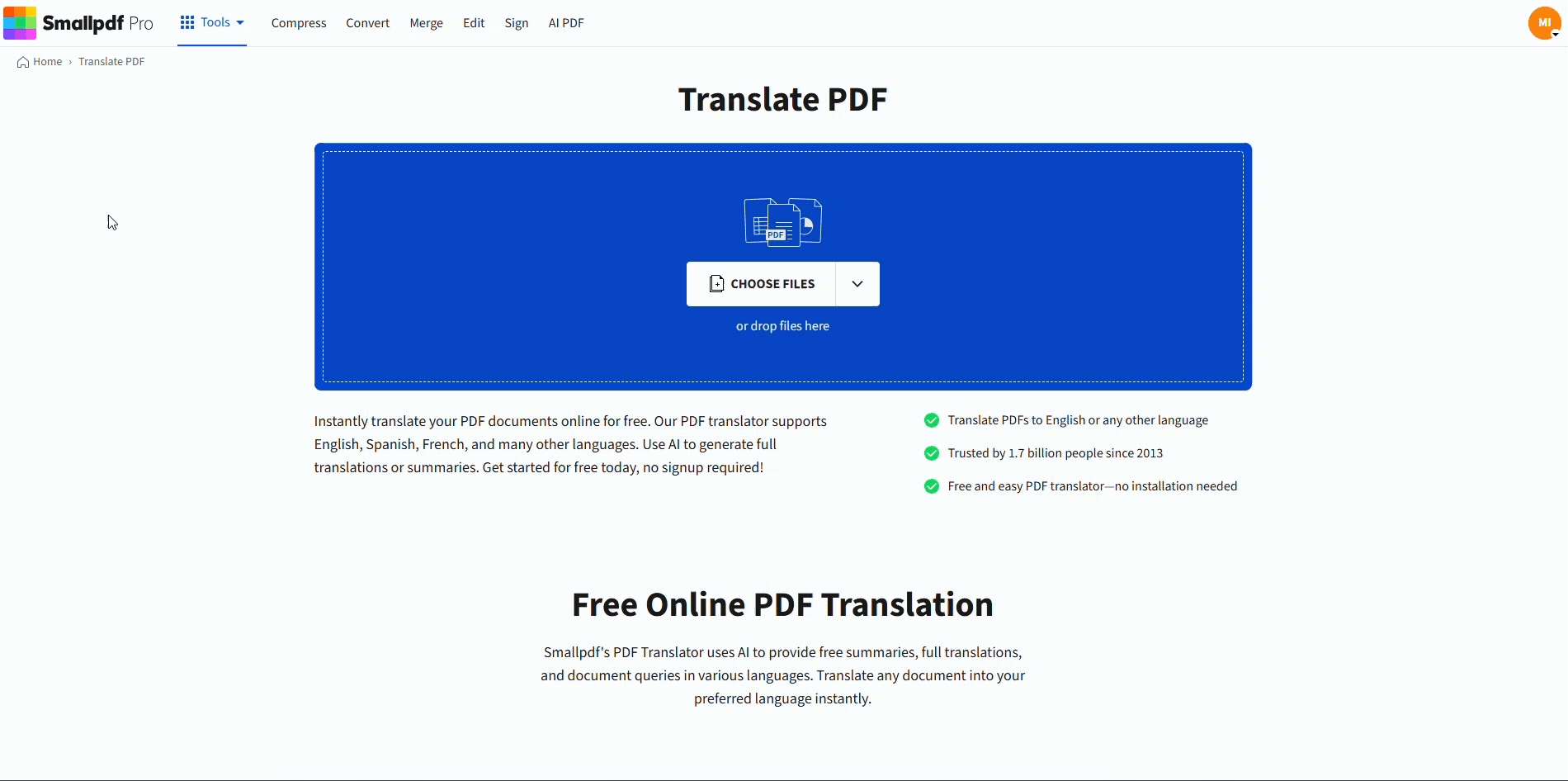You’ve got documents in another language — and now you’re wondering if you can just translate them yourself to save time and money.
For many files, the answer is yes. But if you're applying for a U.S. visa or dealing with USCIS, it’s not that simple. Some translations must meet strict requirements, and self-translation isn’t always accepted.
We’ll show you which documents you can translate on your own, which ones require a certified translator, and where our Translate PDF fits in when you're just getting started.
Can I Translate My Own Documents for USCIS?
No — USCIS does not allow [self-translation for official documents](https://2009-2017.state.gov/m/dghr/flo/154965.htm "self-translation for official documents") tied to your own immigration application. Even if you’re fluent in English and the source language, you’re not allowed to certify your own translation.
For any document submitted to USCIS, you’ll need:
- A complete English translation
- A signed certificate from the translator stating that the translation is accurate
- Proof that the translator is competent in both languages
This means you can’t translate your own:
- Birth certificate
- Marriage or divorce certificate
- Passport or ID
- Criminal record
- Financial documents tied to your application
The translator must be a neutral third party. They don’t need to be a professional linguist, but they can’t be the applicant or a direct relative.
What Documents Can You Translate Yourself?
You can translate your own documents in many other cases — especially if you're not submitting them to an official agency or court.
Here’s a list of documents you can usually translate yourself:
- Personal letters or emails
- Resumes and cover letters
- Instructions or company documents
- Travel confirmations or summaries
- Meeting notes
- Academic research for personal use
- Slides or presentations
- Translated versions of a document you’re submitting in another language
- Drafts you plan to have reviewed or certified later
- Internal communication for bilingual teams
- Informal reports, guides, or templates
- Forms you’re using for non-legal purposes
If your goal is clarity — not legal validity — these are perfect for self-translation. That’s where Smallpdf Translate PDF comes in handy.
How to Translate a Document Yourself Using Smallpdf
If your document isn’t going to USCIS or another legal body, translating it yourself is fast and easy with our online tool. Here’s how to do it: 1. Go to Translate PDF 2. Upload your file (PDF, Word, Excel, PowerPoint) 3. Select your translation type:
- Summary – for a quick overview
- Entire Document – for a full translation with layout preserved
- Choose your source and target languages
- Click Translate
- Download your translated document instantly

Translate a Document Yourself
No formatting mess. No extra software. Just upload, translate, and go.
What About Other Government or Legal Documents?
It’s not just USCIS — many official institutions don’t allow self-translations. If your file is tied to a legal, immigration, or academic submission, assume it needs a third-party translator.
For example:

Other Government or Legal Documents
Where Smallpdf Fits In
We’re not a certified translation service — but we’re a smart first step.
Smallpdf Translate PDF helps you:
- Translate drafts before handing them to a certified translator
- Understand documents written in another language
- Share internal or personal content across teams
- Translate resumes, instructions, or reports for informal use
- Convert Word and Excel files without losing layout
You can upload your file, select your languages, and get a translated version in minutes.
Popular PDF Translation Pairs
- Spanish to English
- Chinese to English
- Arabic to English
- French to English
- Korean to English
- German to English
FAQs
Can I translate documents for USCIS myself?
No. USCIS requires third-party certification from someone fluent in both languages. Self-translations are not accepted — even if accurate.
Can I certify my own translation for a visa?
Not if the document is part of your application. Certification must come from a separate individual. Some embassies or consulates may allow self-translations for supporting materials, but always check the rules.
Does USCIS accept Google Translate or AI tools?
No. All translations must be done (and certified) by a human translator. Tools like Google Translate or ChatGPT do not meet the requirement.
What if I just need to translate something for personal use?
You can absolutely do it yourself. And you can use Smallpdf Translate PDF to do it quickly online, without needing software.
What is self-translation?
It’s when you translate your own document without hiring someone else. It’s fine for personal and internal use, but not accepted for legal or immigration purposes.



